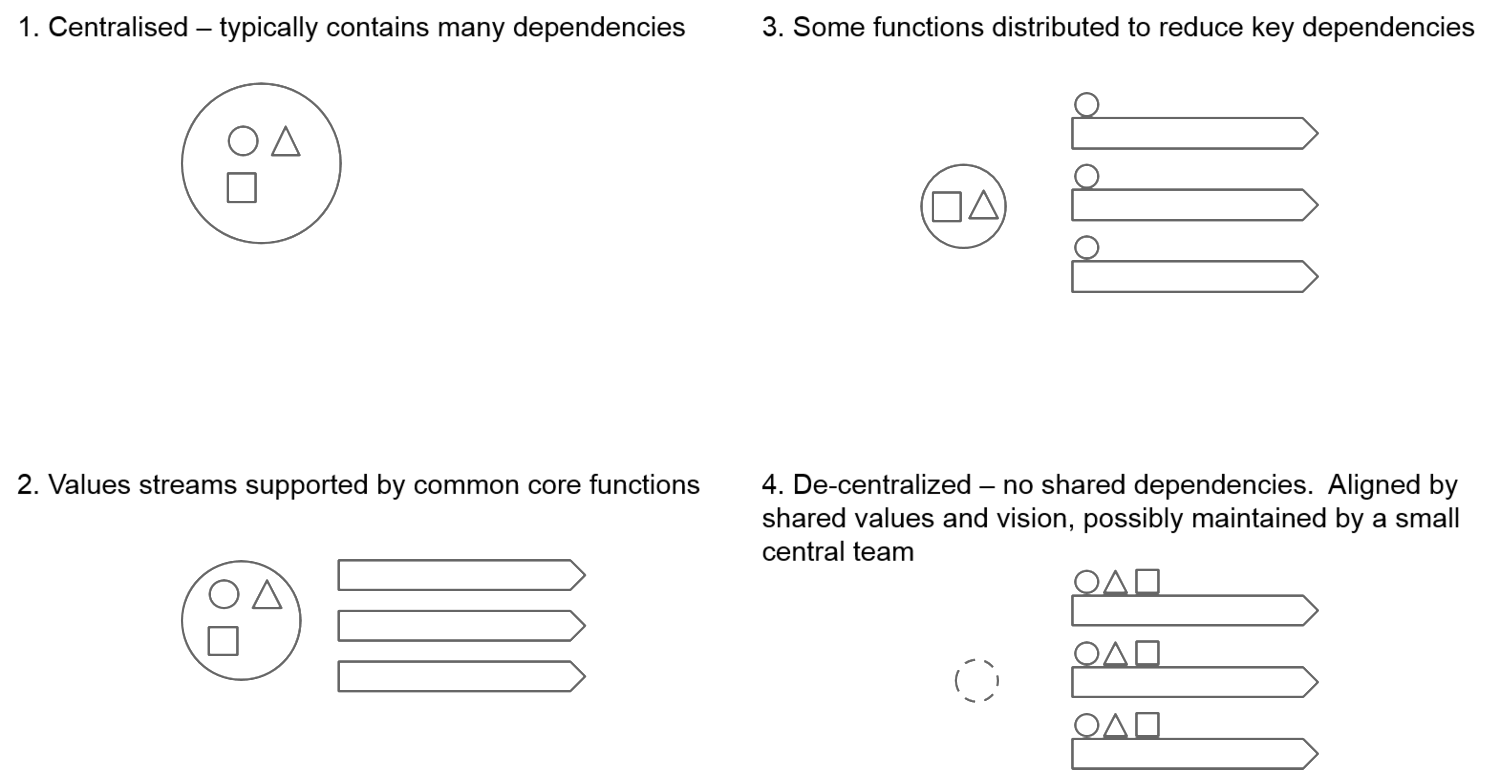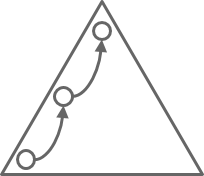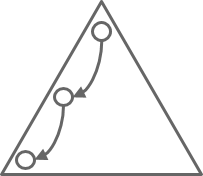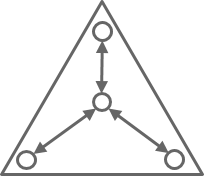
As the level and speed of change in the world increases, organisations will increasingly find it difficult to maintain their viability. One their key impediments is that, for the last hundred years, organisations have increasingly looked to increase profits by optimising costs, leading to centralisation, standards and scale. From now on, they need to optimise flexibility rather than costs, they need to become adaptive.
To become more adaptive, organisations need to speed up decision making.
In most organisations, few people are empowered to make product and business decisions. Information has to make its way to the people who are able to make the appropriate decsion:

Figure 1: Information Travels Upwards
Once made, the decision needs to work its way back to where it can be acted upon:

Figure 2: Decisions Travel Down
This takes time. ‘Key’ decision makers become bottlenecks, slowing everything down even further:

Figure 3: Bottlenecks
If we want to be responsive, then we need to speed decsion making by making decisions as close to where the question is formed as possible. Everyone in the organisation interacts with customers, the organisation itself, or the wider environment. There are ideas, queries, suggestions and impediments being raised right across the organisation.
This means everyone is looking for decisions, and therefore decision making is needed everywhere:

Figure 4: Distributed Decision Making
As everyone can’t know everything, we need to focus the span of decsion making down to make it manageable. The decisions we want made are about the delivery of valuable products and services, so if we align people and products and services, we can make those decisions faster.
We therefore start to envision an organisation shaped around products and service, with decision making relevant to that value creation, located within the area creating that value:

Figure 5: Decisions Aligned to Value
Now the bulk of decisions can be made within the local group, the local circle, speeding them up. People who can get and make decisions quickly feel empowered to take real ownership of their area - they can steer it.
So now we have an organisation consisting of independent nodes with a shared centre providing the overall direction and constraints. This centre core is important to keep the organisational identity - both legal and visual, as well as values. By setting the node objectives, aligned with the overall strategy, this central core sets direction but does not dictate how the node achieves the objectives. This means the central node can focus on strategy, while the nodes focus on delivery.
The questions to be answered are:
The answer to the first question is related to the second one. The more adaptability needed, the smaller the core is likely to be relative to the organisation as a whole.
We can picture this as levels of adaptiveness:

Figure 6: Levels of Adaptiveness